Tupac Shakur: The Duality of Thug Life and Poetic Vision
Few artists have embodied such profound contradictions as Tupac Amaru Shakur. On one hand, he was the embodiment of “Thug Life” – a tattooed, confrontational voice of street reality who helped define West Coast gangsta rap. On the other, he was a deeply sensitive poet whose written words revealed vulnerability, compassion, and revolutionary thought. This duality wasn’t a contradiction but rather two sides of the same revolutionary coin. Through his 25 years of life, Tupac navigated these seemingly opposing identities, creating a legacy that continues to resonate across music, literature, and social justice movements worldwide.
The Meaning Behind THUG LIFE
When most people saw the bold “THUG LIFE” tattoo across Tupac’s abdomen, they assumed it simply glorified criminal lifestyle. But for Tupac, these five letters carried a deeper, more revolutionary meaning. As he explained in interviews, THUG LIFE was an acronym for “The Hate U Give Little Infants F***s Everybody.” This wasn’t just clever wordplay but a profound social commentary on cyclical oppression and its consequences.
“THUG LIFE means The Hate U Give Little Infants F***s Everybody. Meaning what society gives us as youth, it bites them in the ass when we wild out.”
This philosophy formed the backbone of Tupac’s worldview – that societal neglect, racism, and poverty created conditions that would eventually affect everyone. It wasn’t a celebration of criminality but rather an indictment of a system that created the conditions for it. This understanding is crucial to appreciating the seeming contradiction between his “thug” persona and his poetic sensitivity.
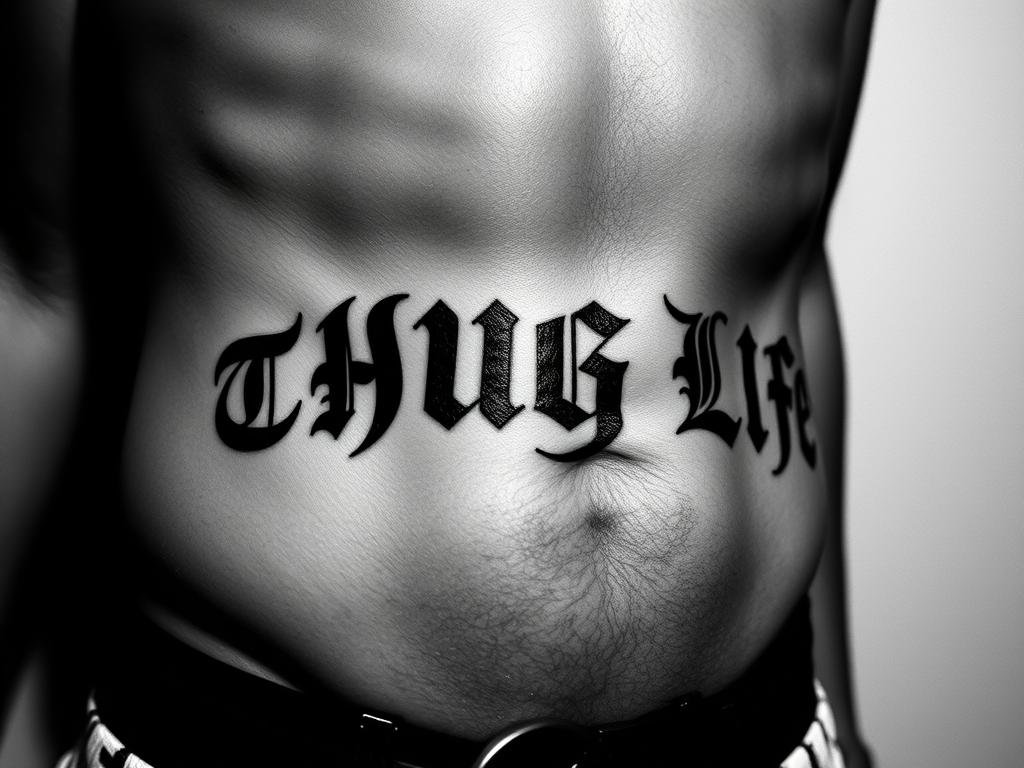
Explore the Origins of THUG LIFE
Discover how Tupac’s philosophy influenced Angie Thomas’s bestselling novel “The Hate U Give” and its powerful message about social justice.
The Poet Before the Rapper
Long before Tupac became a global rap icon, he was a young poet developing his craft. Born to Black Panther activist Afeni Shakur, Tupac was raised in an environment that valued revolutionary thought, education, and artistic expression. His early education at the Baltimore School for the Arts exposed him to Shakespeare, classical theater, and poetry, laying the foundation for his later work.
As a teenager, Tupac filled notebooks with poems that explored themes of poverty, racism, and urban struggle. These early writings revealed a sensitive soul trying to make sense of the harsh realities around him. His poetry teacher at the Baltimore School for the Arts recognized his talent early, noting his unique ability to blend raw emotion with sophisticated wordplay.
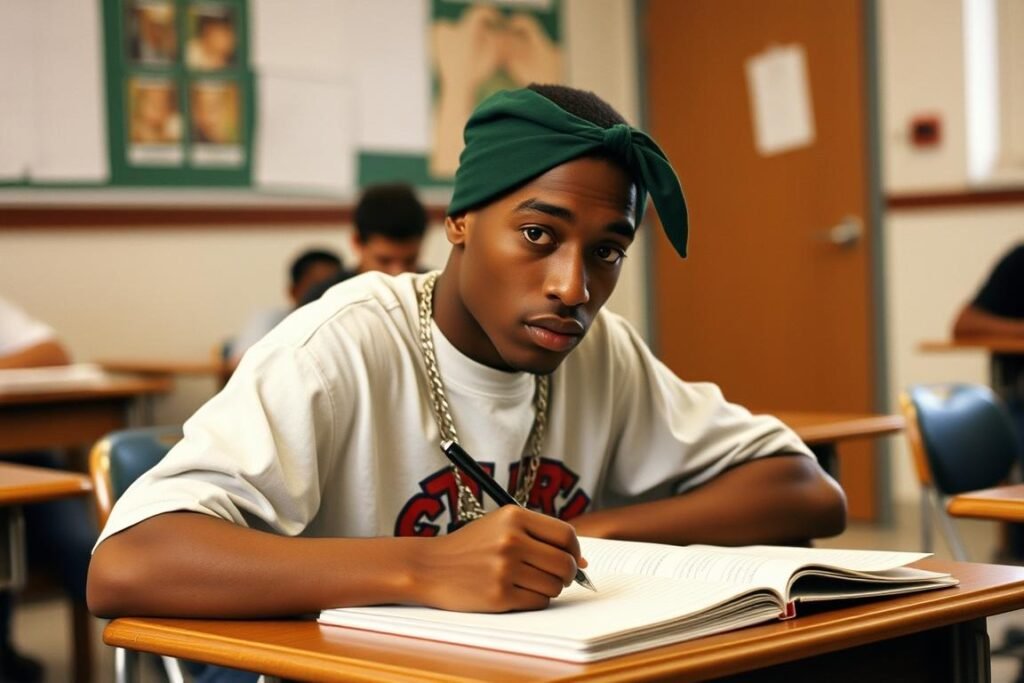
In these formative years, Tupac was developing the voice that would later captivate millions. His poetry from this period shows remarkable maturity and insight, addressing themes that would become central to his music: inequality, systemic racism, and the struggle for dignity in oppressive circumstances.
The Rose That Grew From Concrete
Perhaps the most powerful embodiment of Tupac’s poetic vision is found in his posthumously published collection, “The Rose That Grew From Concrete.” This collection of poems, written between 1989 and 1991, offers the most direct window into his soul, unfiltered by the music industry or public persona he later developed.
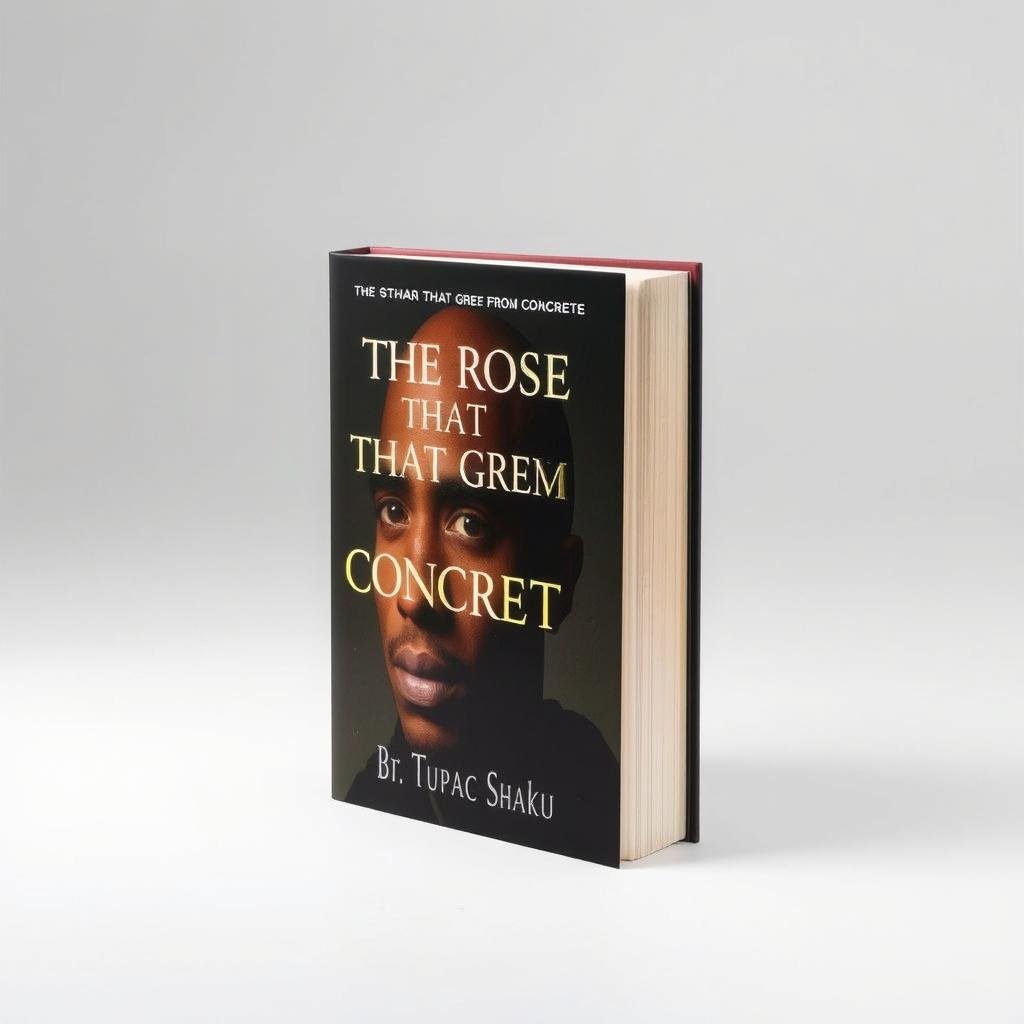
The title poem has become one of his most celebrated works, using the metaphor of a rose growing through concrete to represent resilience and beauty emerging from harsh circumstances:
Did you hear about the rose that grew
from a crack in the concrete?
Proving nature’s law is wrong it
learned to walk without having feet.
Funny it seems, but by keeping its dreams,
it learned to breathe fresh air.
Long live the rose that grew from concrete
when no one else ever cared.
This poem encapsulates Tupac’s view of himself and others who rise above difficult circumstances. The rose represents not just survival but transformation – turning obstacles into stepping stones. This metaphor extends to his view of young people in marginalized communities who, despite being given little opportunity, find ways to thrive and create beauty.
The Rose That Grew From Concrete
Tupac’s collection of 72 poems written between ages 19-21 reveals his innermost thoughts on love, family, death, and the struggle of urban life. Published posthumously in 1999, these poems show a side of Tupac rarely seen in his music.
Other poems in the collection explore themes of unrequited love (“Sometimes I Cry”), maternal appreciation (“Mother’s Song”), and social critique (“Liberty Needs Glasses”). Throughout, we see a young man wrestling with profound questions about identity, justice, and human connection – the same themes that would later define his music.
When Poetry Met Music: Poetic Elements in Tupac’s Rap
As Tupac transitioned from writing poetry to creating rap music, he brought his poetic sensibilities with him. His lyrics often featured the same metaphorical richness, emotional depth, and social commentary found in his written poetry. This fusion created a unique style that elevated rap as an art form.
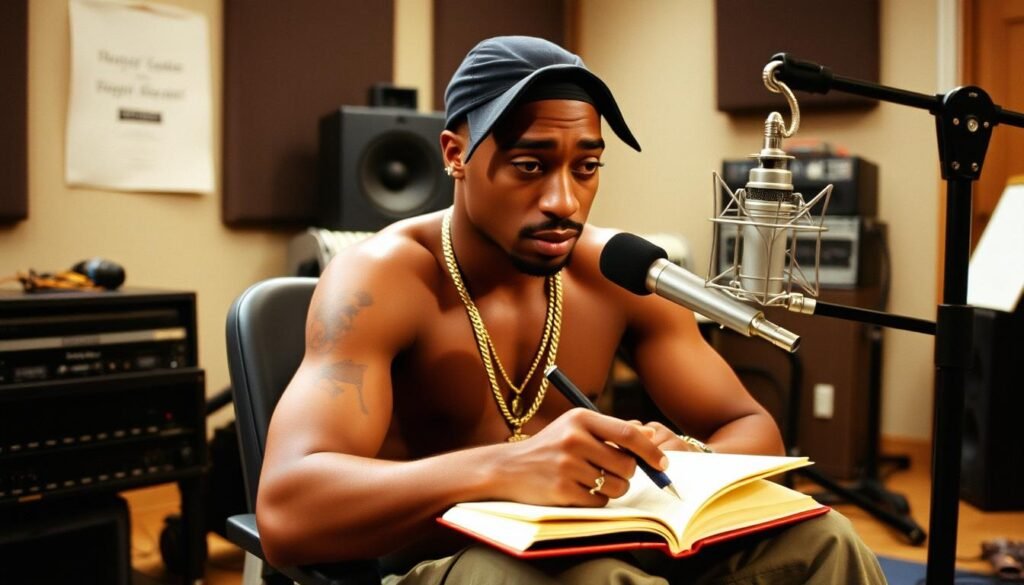
Dear Mama: A Poetic Tribute
“Dear Mama” (1995) stands as one of Tupac’s most poetic songs, a heartfelt tribute to his mother Afeni Shakur. The track showcases his ability to blend raw honesty with poetic expression:
“And even as a crack fiend, mama
You always was a black queen, mama
I finally understand
For a woman it ain’t easy trying to raise a man”
The song’s unflinching honesty about his mother’s struggles with addiction, balanced with profound appreciation for her strength, demonstrates Tupac’s poetic ability to hold contradictory truths simultaneously. This nuanced perspective is a hallmark of great poetry.
Changes: Poetic Social Commentary
In “Changes,” Tupac delivers social commentary with poetic precision, addressing racism, poverty, and police brutality:
“I see no changes, wake up in the morning and I ask myself
Is life worth living? Should I blast myself?
I’m tired of being poor and, even worse, I’m black
My stomach hurts so I’m looking for a purse to snatch”
The song employs internal rhyme schemes, vivid imagery, and a narrative structure more commonly found in poetry than rap of that era. Its enduring relevance speaks to Tupac’s poetic ability to capture universal truths about social inequality.
Experience Tupac’s Musical Poetry
Listen to Tupac’s most poetic tracks to fully appreciate how he blended rap with poetic expression.
Embracing Contradictions: The Thug and The Poet
The apparent contradiction between Tupac’s “thug” persona and his poetic sensitivity wasn’t a contradiction at all in his mind. Instead, it reflected the complex reality of life for many young Black men in America – forced to be tough to survive while harboring deep sensitivity and intelligence.
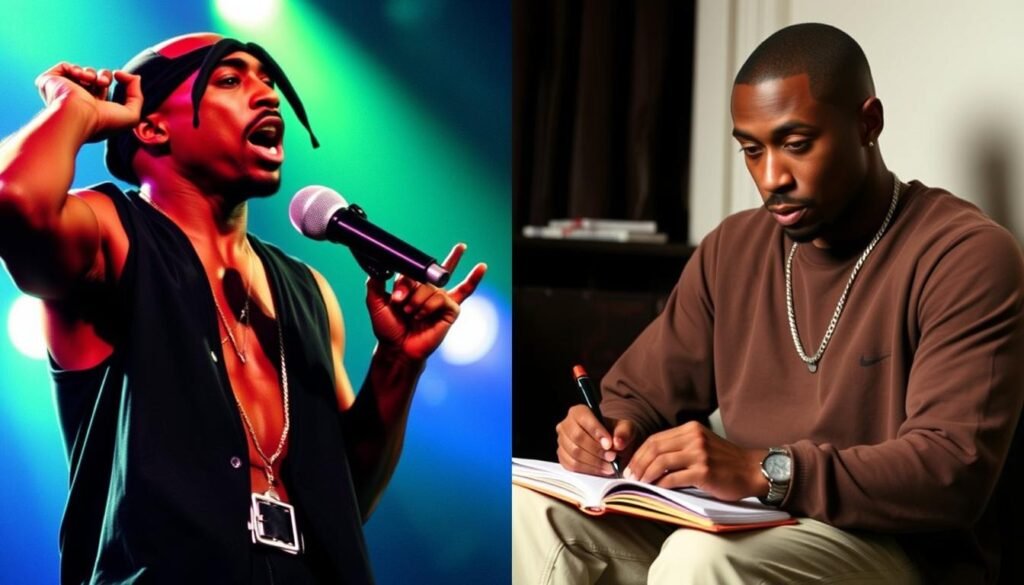
Tupac himself addressed this duality in interviews, explaining that his “thug” identity wasn’t separate from his poetic self but rather two expressions of the same revolutionary spirit. Both were responses to the same societal conditions – one a shield of protection, the other a means of processing and expressing deeper truths.
“I’m not saying I’m gonna change the world, but I guarantee that I will spark the brain that will change the world.”
This quote reveals Tupac’s understanding of his role as both a provocateur and a poet – someone who could use different aspects of his identity to inspire change in different ways. His “thug” persona gave him credibility with those living in harsh urban realities, while his poetic side allowed him to articulate their struggles in ways that could reach broader audiences.
The Revolutionary Thread
What united these seemingly disparate aspects of Tupac was his revolutionary spirit. Raised by a Black Panther mother, Tupac inherited a tradition of resistance to oppression. Both his confrontational rap persona and his vulnerable poetry served the same ultimate goal: challenging systemic inequality and giving voice to the marginalized.
In songs like “Brenda’s Got a Baby,” Tupac used narrative storytelling techniques from poetry to humanize social issues like teen pregnancy and poverty. Meanwhile, in tracks like “Hit ‘Em Up,” he employed the aggressive stance of his thug persona to fight perceived enemies. Both approaches stemmed from the same place – a deep commitment to authenticity and justice.
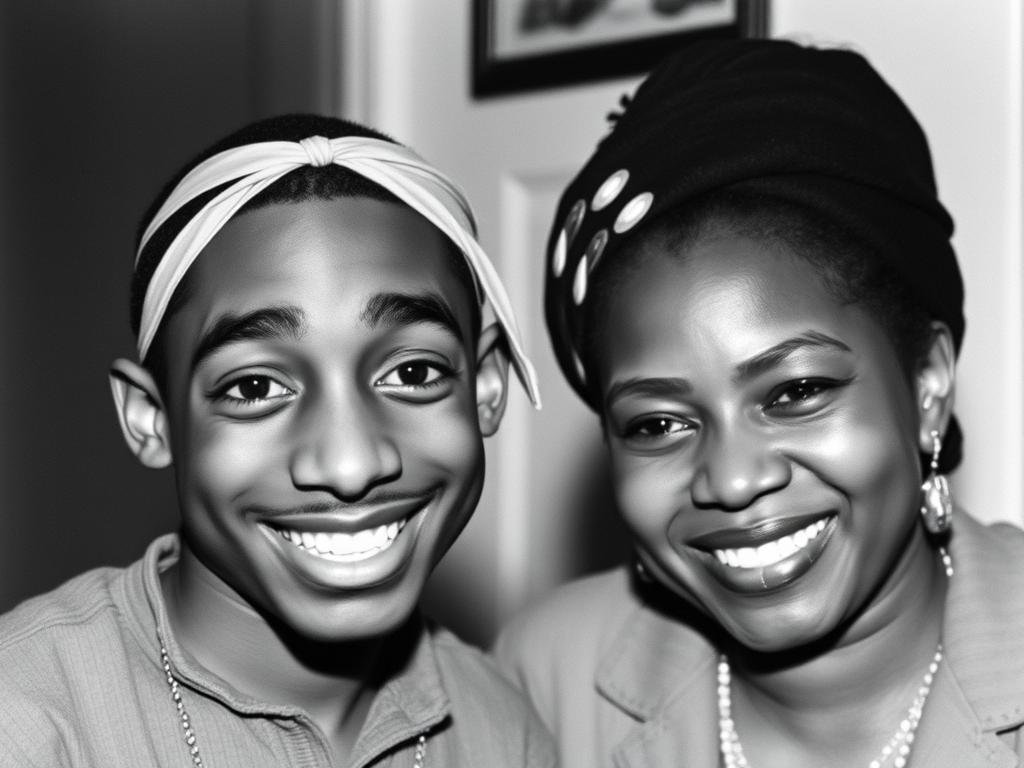
Influence on Hip-Hop Culture
Tupac’s integration of poetic elements with his “thug life” philosophy fundamentally transformed hip-hop culture. Before him, rap was often seen as either party music or political commentary, but Tupac showed it could be a vehicle for complex poetic expression while maintaining street credibility.
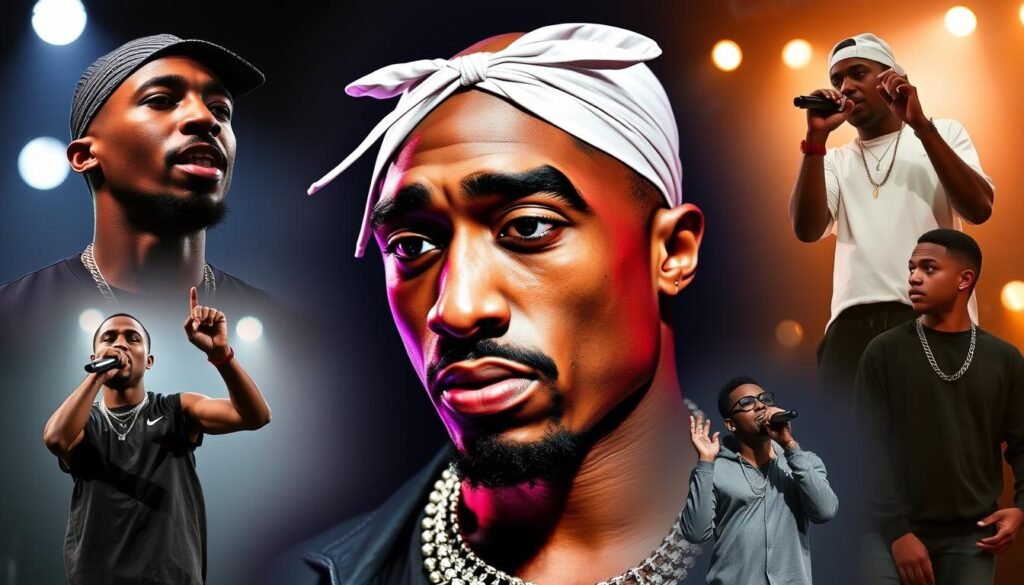
Artists like Kendrick Lamar, J. Cole, and Nas have acknowledged Tupac’s influence on their approach to music. Kendrick Lamar’s album “To Pimp a Butterfly” directly references Tupac and continues his tradition of blending poetic techniques with hard-hitting social commentary. The album’s final track, “Mortal Man,” even features a “conversation” with Tupac constructed from interview clips.
“I put Tupac beyond Shakespeare.”
This quote from fellow rap legend Nas speaks to Tupac’s literary impact. By bringing poetic techniques into mainstream rap, Tupac elevated the entire genre, challenging the artificial boundary between “high” and “low” art forms. His work demonstrated that street knowledge and literary sophistication could coexist, paving the way for future artists to embrace this duality.
Poetic Techniques
Tupac introduced complex metaphors, extended allegories, and narrative structures to mainstream rap, techniques more commonly associated with traditional poetry.
Emotional Range
He normalized emotional vulnerability in hip-hop, making it acceptable for male rappers to express pain, love, and uncertainty alongside strength and confidence.
Social Commentary
Tupac established a template for socially conscious rap that didn’t sacrifice authenticity or commercial appeal, influencing generations of politically engaged artists.
Key Poems That Reveal Tupac’s Soul
To truly understand Tupac’s poetic vision, one must engage directly with his written poetry. Beyond “The Rose That Grew From Concrete,” several other poems offer profound insights into his worldview and inner life.
“Sometimes I Cry”
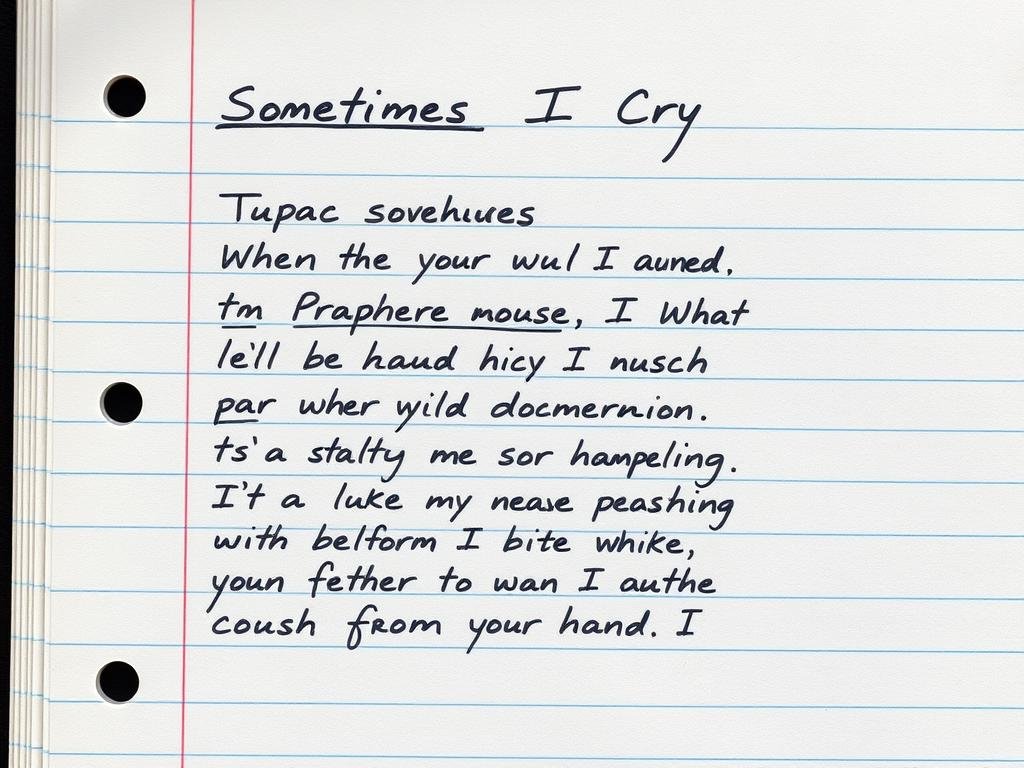
This deeply vulnerable poem reveals Tupac’s struggles with loneliness and emotional pain, challenging the hypermasculine expectations placed on young Black men:
“Sometimes when I’m alone
I cry because I’m on my own
The tears I cry R bitter and warm
They flow with life but take no form”
“Liberty Needs Glasses”

This scathing critique of the American justice system uses clever wordplay and imagery to highlight systemic inequality:
“excuse me but Lady Liberty needs glasses
And so does Mrs. Justice by her side
Both the broads R blind as bats
Stumbling thru the system”
“In the Event of My Demise”
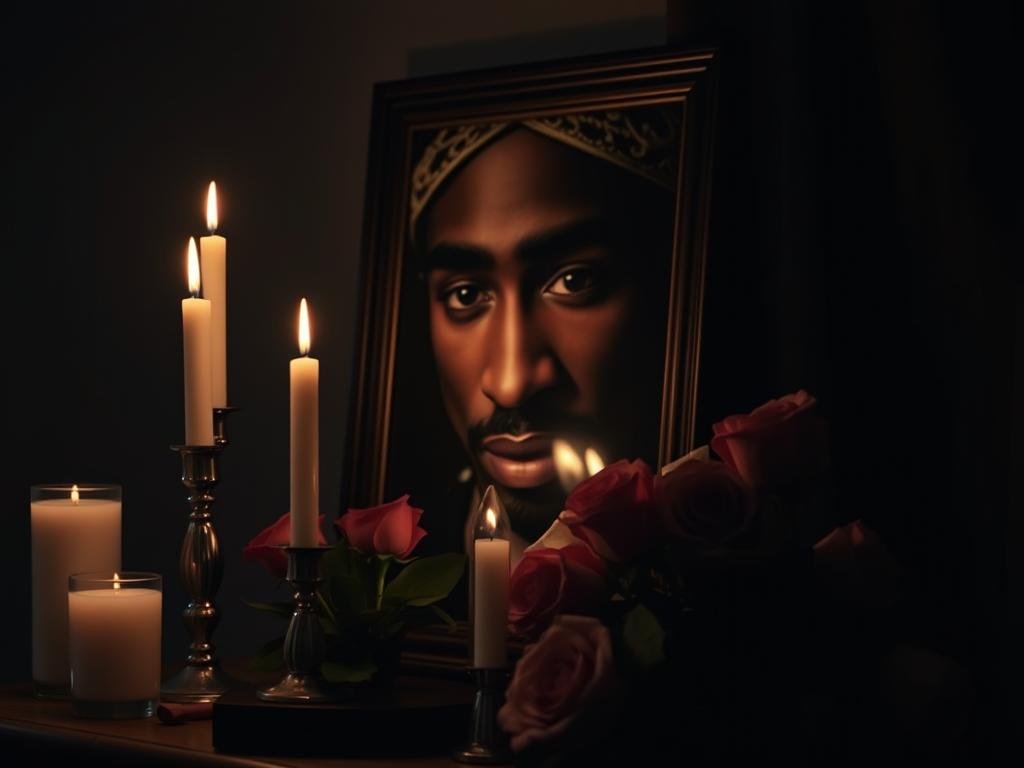
Written with eerie prescience, this poem addresses how Tupac wished to be remembered after death:
“In the event of my Demise
when my heart can beat no more
I Hope I Die For A Principle
or A Belief that I had Lived 4″
These poems reveal a depth of thought and feeling that complements Tupac’s musical output. They show a young man grappling with mortality, justice, and vulnerability in ways that transcend the limitations of his public persona. Reading his poetry alongside listening to his music provides the fullest picture of his artistic vision.
The Enduring Legacy: Poet, Prophet, Revolutionary
More than 25 years after his death, Tupac Shakur’s legacy continues to grow. His dual identity as both thug and poet has allowed his work to reach across boundaries of race, class, and generation. Academic institutions now study his poetry and lyrics, with courses dedicated to his work at universities including UC Berkeley and Harvard.
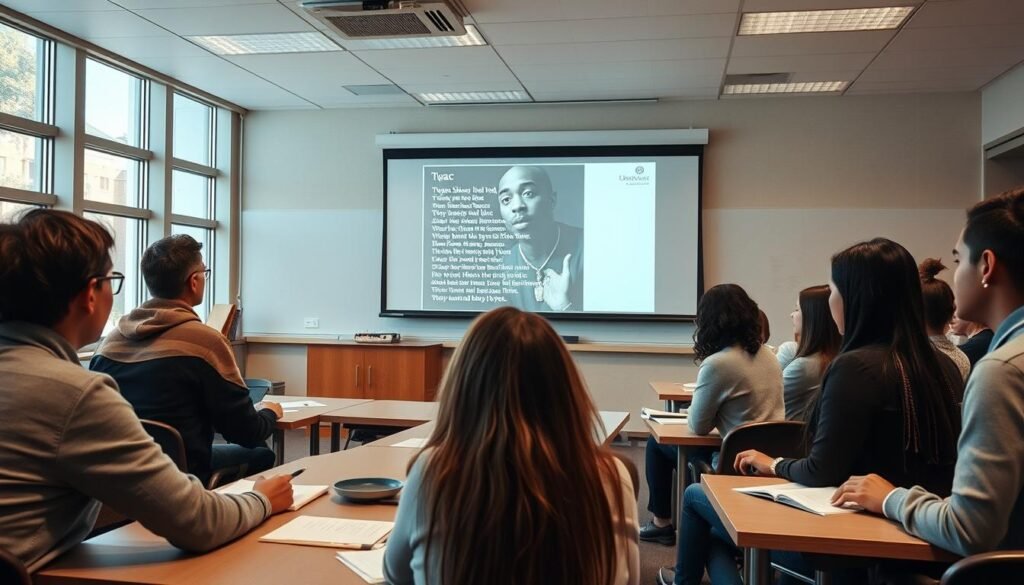
What makes Tupac’s legacy so enduring is precisely this duality – his ability to speak authentically to different audiences without compromising either aspect of his identity. He could articulate the harsh realities of street life while simultaneously offering poetic reflections on its deeper meaning. This combination made him not just a rapper or a poet, but a cultural prophet whose insights continue to resonate.
“I’m not saying I’m gonna rule the world or I’m gonna change the world, but I guarantee you that I will spark the brain that will change the world. And that’s our job, to spark somebody else watching us.”
This quote encapsulates Tupac’s understanding of his own legacy. He saw himself not as the final word but as a catalyst for future change – someone who could inspire others to carry forward the work of creating a more just society. In this sense, his dual identity as thug and poet was strategic, allowing him to reach different audiences with the same revolutionary message.
A Voice That Transcends Time
Perhaps the most remarkable aspect of Tupac’s legacy is how contemporary his work remains. His analyses of police brutality, systemic racism, and economic inequality could have been written today. His poetry about personal struggle, resilience, and hope speaks to universal human experiences that transcend his specific time and place.
In embracing both his identity as a “thug” – a product of harsh social conditions – and as a poet with profound sensitivity, Tupac created a template for authentic expression that continues to influence artists, activists, and thinkers worldwide. He showed that these seemingly contradictory aspects of identity could coexist not just peacefully but synergistically, each strengthening the other.
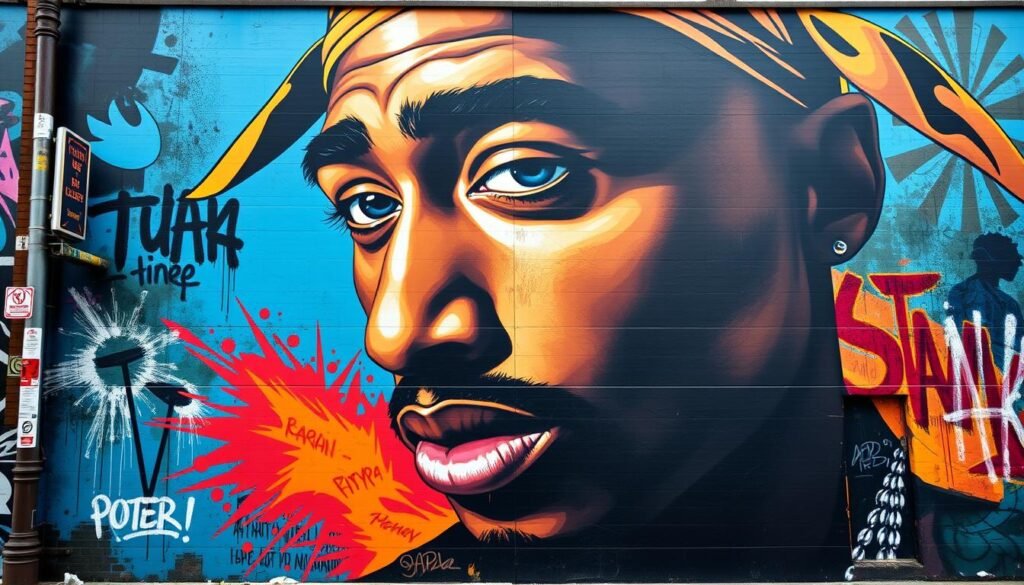
Conclusion: The Rose and The Concrete
Tupac Shakur’s life and work embody the metaphor at the heart of his most famous poem – he was the rose that grew from concrete. Born into difficult circumstances, he transformed his experiences into art that continues to inspire and challenge. His dual identity as both thug and poet wasn’t a contradiction but a necessary response to the complex reality he navigated.
By embracing both aspects of his identity, Tupac created a body of work that speaks to the full spectrum of human experience – from rage to tenderness, from despair to hope. He showed that poetry could emerge from the harshest conditions and that even those labeled as “thugs” by society could harbor profound artistic sensitivity.
“Long live the rose that grew from concrete when no one else even cared.”
This line from his signature poem serves as both epitaph and enduring mission statement. Tupac’s legacy challenges us to look beyond simplistic labels, to find beauty in unexpected places, and to recognize the poetic potential in every life – especially those that society has written off. In doing so, he created not just art but a framework for understanding the complex interplay between social conditions and individual expression that continues to resonate across generations.
Discover More About Tupac’s Legacy
Explore documentaries, books, and music that provide deeper insight into Tupac’s life and continuing influence.


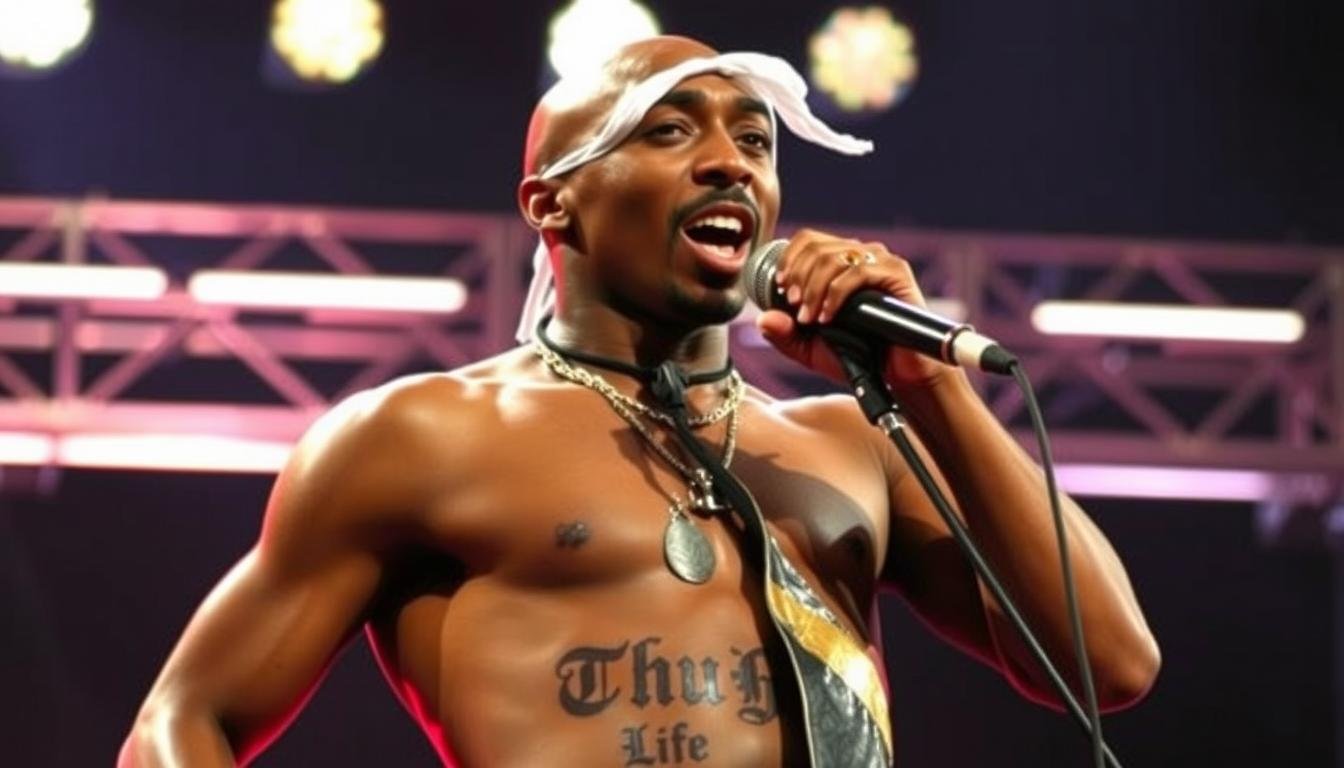
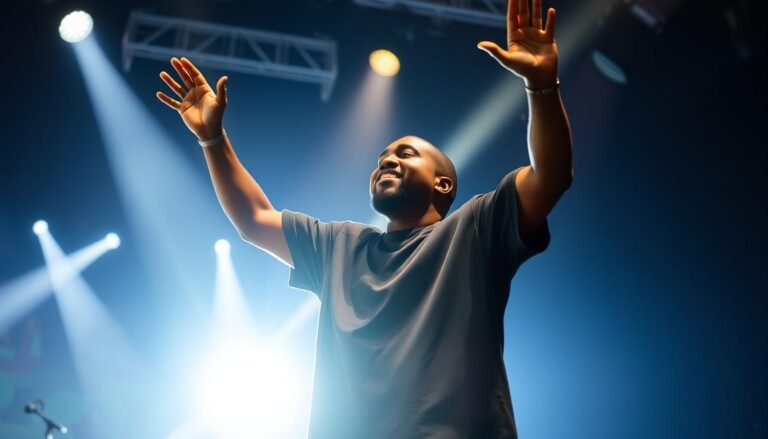
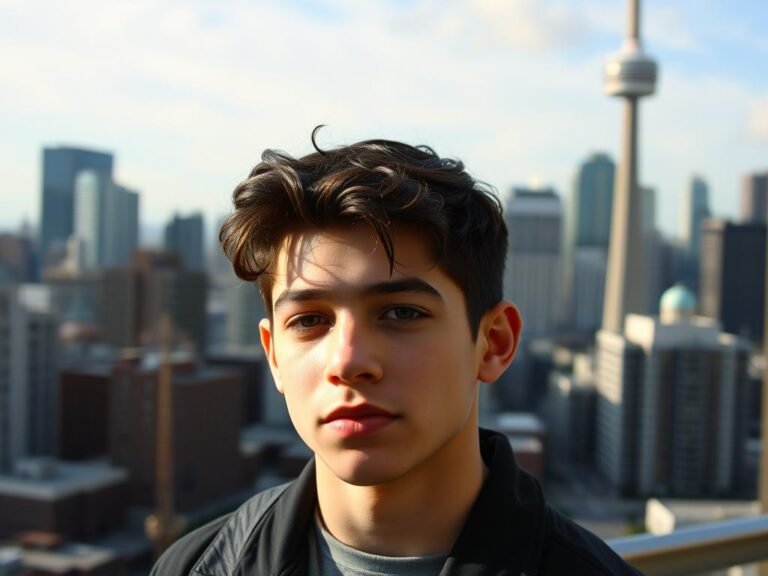
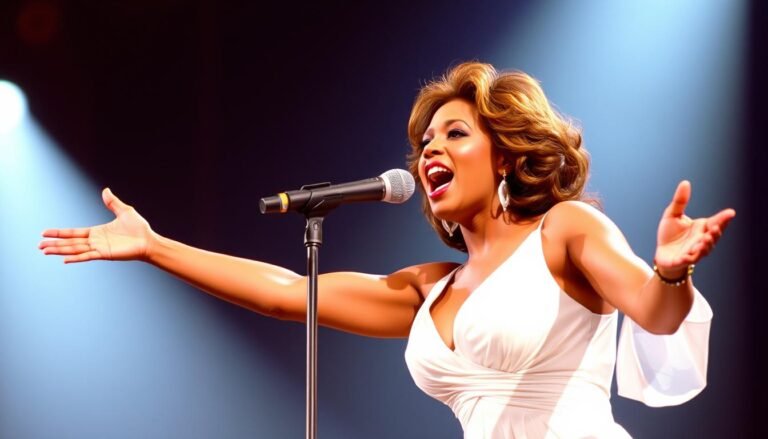


Impact on Social Justice Movements
Beyond music, Tupac’s dual identity as poet and revolutionary has influenced social justice movements worldwide. His ability to articulate the struggles of marginalized communities with both raw emotion and poetic precision made him a natural icon for those fighting systemic oppression.
The Black Lives Matter movement has frequently drawn on Tupac’s words and imagery. His analyses of police brutality, systemic racism, and economic inequality remain tragically relevant decades after his death. Activists often quote his lyrics and poems at rallies and in social media campaigns.
Perhaps most notably, author Angie Thomas was directly inspired by Tupac’s THUG LIFE philosophy when writing her bestselling novel “The Hate U Give.” The book, which addresses police violence against Black communities, takes its title from Tupac’s acronym and centers on a protagonist whose political awakening is partly inspired by Tupac’s music and ideas.
“I might not change the world, but I guarantee that I will spark the brain that will change the world.”
This prophecy has proven true, as Tupac’s words continue to inspire activists, artists, and thinkers working toward social change. His dual identity as both street soldier and poet intellectual created a template for a new kind of revolutionary – one who could speak truth to power while maintaining connections to the communities most affected by injustice.
Explore Tupac’s Revolutionary Legacy
Discover how Tupac’s ideas continue to influence modern social justice movements and contemporary literature.
Learn About “The Hate U Give”